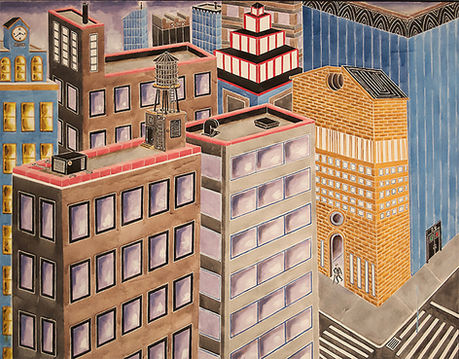
Nirvana
 |  |
|---|---|
 |  |
 |  |
 |
Urbana
 |  |
|---|---|
 |  |
 |  |
 |
Satoru Sasaki
 |  |
|---|---|
 |  |
 |  |
 |  |
 |  |
 |  |
 |  |
Guys
Metropolis
Sacred/Profane/Mundane
 |  |
|---|---|
 |  |
 |  |
 |  |
 |  |
 |  |
 |  |
 |  |
 |  |
 |  |
 |  |
 |
A walk through any major art museum reveals that people experience the world’s cultural heritage through the power of images. Our spiritual life is expressed by religious icons, our humanity through portraiture and myth, and the world of ordinary, everyday life, through genre painting. The greatest artists placed powerful perceptual metaphors in our mind’s eye; images that define history, transfix our assumptions about the past and create the portal through which we envision the future. The paintings in this exhibition address themes known to us from the canon of art history – the temporal nature of the world, the fragility of life, the senselessness of cruelty, suffering and death. Ed Rath expresses these themes through personification and parody. His animated trees bypass the idealization of the human figure and express raw emotion by aping human poses. Branches become hair and arms, bark - skin, knots and holes – eyes. These longsuffering soulless beings bear their crosses in silence while they enact the great narratives of art history. Works inspired by sacred narratives include “Madonna and Child" and “Pieta.”Works based on profane subjects include “The World Revolves around Me” and “Pumpkin Eater.”Works on the mundane theme include “Commuters.”
Dreams and Nightmares
 |  |
|---|---|
 |  |
 |  |
 |  |
 |  |
 |  |
 |  |
In 1971 I started recording and painting certain repeating dreams, dreams from which I awoke in an agitated state, narrowly escaping certain demise from confrontations with fantastic monsters and evil beings of unknown origin. A most remarkable side effect of making the paintings was that I stopped having the dreams. It seemed the act of painting empowered me to move on from the anxiety which caused the dreams.
After several years, the frequency of these lucid dreams waned and my work moved into other themes. Notwithstanding, I continued to record and paint those dreams which wakened me with wild imagery and memorable, nonsensical plot lines. Since the main focus of my work is personal narrative, recording dream narratives is a natural counterpoint to recording memories of actual events I experienced in the real world. When recording dreams, one relies on the fidelity of one’s memory to capture the details. In the end, all we have to show is the written words or the drawings, neither of which can be verified by others. We know our memories idealize and change things remembered to suit our current needs. Therefore, one might ask: What is the point of documenting such personal ephemera? The answer: Artists are products of our society, and our subjective experiences tell a lot about the world in which we live. We American artists prize our constitutional right to freedom of expression. As history shows, this precious right to explore our emotional experiences without censorship and express them in art comes to us at no small cost.
Although dream based artworks comprise only ten percent of my oeuvre, they generated more creative invention for me than any of my other work. Until now, I never produced an exhibit dedicated exclusively to this theme. Two years ago, a health scare motivated me to do something about that. I resolved to search all of my old sketchbooks, journals, and boxes of slides for any work on the subject of dreams and nightmares and to organize these works into a book. A year later, “Dreams and Nightmares” was realized. At last, my work on this elusive subject was brought together under one cover, complete with notes, sketches, and annotations.
This exhibition highlights a dozen works depicting different dreams experienced by the artist, over the past several years, along with annotations.
Terrible Trees
 |  |  |
|---|---|---|
 |  |  |
 |  |  |
 |  |  |
 |  |  |
 |  |  |
 |  |  |
 |  |  |
 |  |  |
 |  |  |
 |  |  |
 |  |  |
 |






























